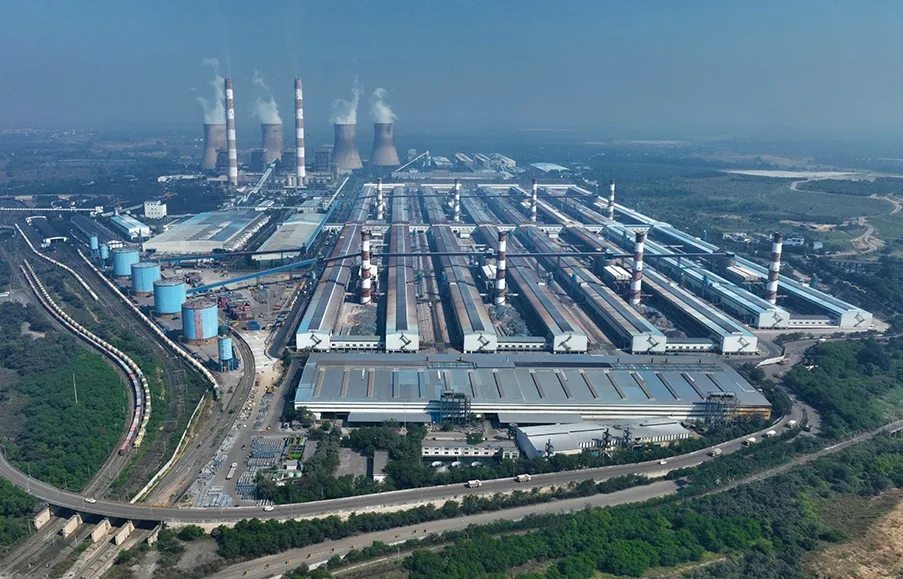Vedanta’s First Fitch Rating: A Comprehensive Analysis of the ‘B-‘ Rating with Positive Outlook
In a significant development, Fitch Ratings assigned a ‘B-‘ credit rating to Vedanta Resources Limited (VRL), coupled with a positive outlook. This marks the first time the global credit rating agency has rated the company, reflecting progress in its financial management amidst a challenging macroeconomic environment. The rating and outlook signal a mix of optimism about Vedanta’s operational capabilities and concerns over its liquidity challenges.
Overview of Fitch’s ‘B-‘ Rating
The ‘B-‘ rating indicates a highly speculative credit profile. While Fitch acknowledges Vedanta’s strong position in the commodities market and recent deleveraging efforts, it remains cautious about the company’s liquidity risks and high refinancing requirements. The positive outlook reflects the potential for improved financial metrics and liquidity in the near future, driven by strategic measures.

Key Factors Influencing the Rating
1. Strengths in Commodities Operations
Vedanta’s diversified portfolio, spanning zinc, aluminum, oil, and gas, plays a pivotal role in supporting its revenue base. The company is a market leader in India in various sectors:
- Zinc: Through its subsidiary Hindustan Zinc Limited (HZL), Vedanta commands a 75% market share in India’s zinc industry.
- Aluminum: Vedanta is the largest primary aluminum producer in the country, contributing significantly to its revenue base.
- Oil and Gas: With operations accounting for approximately 25% of India’s crude oil production, Vedanta has a substantial footprint in energy.
These operational strengths provide stable cash flows, particularly from zinc and aluminum, which are less susceptible to volatile pricing trends compared to other commodities.
2. Improved Deleveraging Efforts
Vedanta has made progress in addressing its high debt levels, a long-standing concern for investors and credit agencies. Key initiatives include:
- Debt Prepayment: The company has prepaid high-cost debt, reducing interest burdens.
- Equity Infusion: Raising $1 billion in equity during FY2024 has further strengthened its financial position
While these measures improve Vedanta’s consolidated financial metrics, liquidity at the parent company, Vedanta Resources, remains a critical constraint.
3. Challenges in Liquidity Management
Despite operational successes, Vedanta’s liquidity remains weak. Fitch noted that:
- Vedanta faces refinancing risks for $1.2 billion in debt maturities by 2026. A lack of progress in securing funds could escalate these risks, pressuring the company’s financial profile.
- Parent company Vedanta Resources relies heavily on dividends from its subsidiaries. Any disruption in cash flow from these entities could adversely affect its ability to service debt.
4. Macroeconomic and Regulatory Pressures
Vedanta operates in sectors that are subject to significant government oversight and global economic fluctuations:
- Commodity prices: Volatility in zinc, aluminum, and crude oil prices can impact revenue.
- Regulatory challenges: Policies governing natural resource extraction and environmental compliance add to operational complexity.
Positive Outlook: Reasons for Optimism
Fitch’s positive outlook highlights the possibility of improved financial stability, contingent on the successful execution of several initiatives:
- Refinancing Plans: Vedanta is expected to proactively address its upcoming debt maturities by 2025. Successful refinancing would reduce liquidity risks and strengthen its balance sheet.
- Operational Efficiency: Continued efficiency improvements across key segments like zinc and aluminum can enhance cash flow stability.
- Deleveraging Commitments: Further reduction in debt, supported by divestments and cost management, could pave the way for a higher credit rating.
Financial Performance Snapshot
Vedanta’s financial performance in recent years has been a mixed bag. Key metrics include:
| Metric | FY2023 | FY2024 | FY2025 (Est.) |
|---|---|---|---|
| Revenue (in $ million) | 18,283 | 17,128 | 18,166 |
| EBITDA (in $ million) | 4,472 | 4,643 | 5,582 |
| Net Debt (in $ million) | 15,358 | 14,330 | 13,452 |
| Debt/EBITDA Ratio | 3.7x | 3.4x | 2.6x |
While the company has improved its debt/EBITDA ratio, maintaining this trajectory is essential for sustaining investor confidence.

Vedanta’s Strategic Roadmap
1. Strengthening Subsidiary Performance
Vedanta’s subsidiaries, such as Hindustan Zinc, are critical to its cash flow generation. The company aims to further optimize operations to ensure consistent dividend payouts.
2. Renewable Energy and ESG Commitments
Vedanta is diversifying into renewable energy and reinforcing its Environmental, Social, and Governance (ESG) initiatives. For instance, it has committed to reducing greenhouse gas emissions and improving water recycling practices across its operations.
3. Capex for Growth
The company has earmarked significant investments in growth projects across its zinc, aluminum, and oil businesses. While this could strain short-term cash flow, the long-term benefits are expected to bolster revenue and margins.

Challenges Ahead
- High Leverage: Despite progress, Vedanta’s debt levels remain elevated, with a net debt/EBITDA ratio exceeding 3x in FY2024.
- Refinancing Risks: The success of upcoming refinancing efforts will be a litmus test for Vedanta’s financial stability.
- Commodity Price Volatility: Fluctuations in global commodity prices could impact margins, particularly in oil and zinc.
Conclusion
Fitch’s assignment of a ‘B-’ rating to Vedanta, with a positive outlook, underscores the company’s potential to navigate financial challenges while leveraging its robust operational capabilities. While significant hurdles remain, Vedanta’s strategic initiatives in deleveraging, operational optimization, and ESG focus position it well for long-term growth.
The road ahead is not without risks. Successful execution of refinancing plans and further debt reduction will be key to achieving an upward rating trajectory. For now, the positive outlook provides a much-needed boost to investor confidence and affirms Vedanta’s resilience in the face of adversity.









